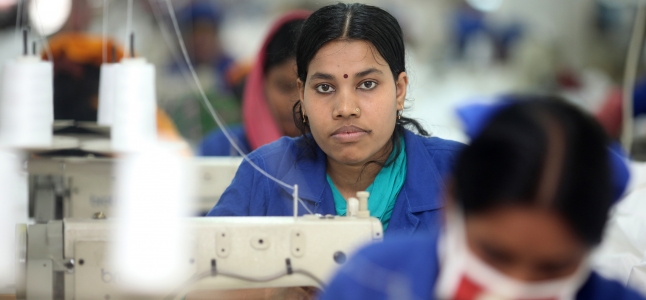This week I met a young woman named works long hours at a garment factory while her ailing mother cares for her daughter. She brings home just over the recently increased monthly minimum wage of 5300 Taka (or $68).
This is what she pays out each month for living expenses:
- 2000 Taka for a rented room with just enough space for a bed (and is shared across 4 people)
- 500 Taka for electricity for the room
- 300 Taka for electricity to cook her food (located outside of her single room)
- 3000 Taka for private school and tutor
It became clear in our discussion that Shimu has a bit of support. Her brother helps to pay for some of her daughter’s private school fees. She described the poor quality of education of public schools, adding that private schools are not much better, making it necessary to bring in an external tutor to fill the gaps. Clearly, this is not sustainable. Something has to change for Shimu to earn enough to cover her needs. But what kind of change?
The concept of living wage is complex and cannot be solved by any one actor. For employers to materially and sustainably increase wages, new value needs to be created. We’ve seen many different ways to do this in the factories, from increasing productivity to reducing costs. But this is not enough. Such measures need to be accompanied by efforts to give workers a stronger and more confident voice and through better dialogue with management and representation through independent committees or unions.
Even with an increase in take-home pay, garment workers like Shimu still struggle. In Dhaka, I heard that landlords of slum housing have raised the cost of rent to match the recent minimum wage increase.. The slum housing I visited this week had a per square meter cost higher than what you would see in parts of Europe! In fact, according to Iqbal Habib, a leading Bangladeshi architect and environmental activist, the square footage of slum housing is about 36 Taka vs. only 23 Taka for more luxury accommodation in the cities best neighborhoods!
And, even more worryingly, each the four young women I met that day in Dhaka’s Rasulbagh slum had lost the savings they had managed to scrape together by investing with a “local cooperative” who promised high returns. Without proper regulation and consumer protection, these scams persist and take advantage of the most disadvantaged.
In this challenging context, getting to a living wage is a complex journey where multiple actors – government, employers, buyers, workers’ representatives and unions and consumer champions – all have a critical role to play. And as it takes time to step into these roles and strengthen those institutions that work toward living wages – sometimes the smallest innovations can have a “nudging” effect on these actors. That’s why we, in partnership with HiiL have designed the Living Wage Innovation Challenge which aims to identify and scale those enablers that can help create more transparency, a stronger worker voice, more shared value, and ultimately, better livelihoods for the men and women who work in the garment industry.
I am proud to celebrate, on November 26th, the winners of this challenge, each of which offers a meaningful contribution to the efforts to enable a living wage. And I hope that their innovations, and ongoing efforts of the many actors who influence living wage, will result in a situation where people like Shimu are able to support their families, invest in their futures, and live dignified lives.
Leslie Johnston
Executive Director, C&A Foundation


